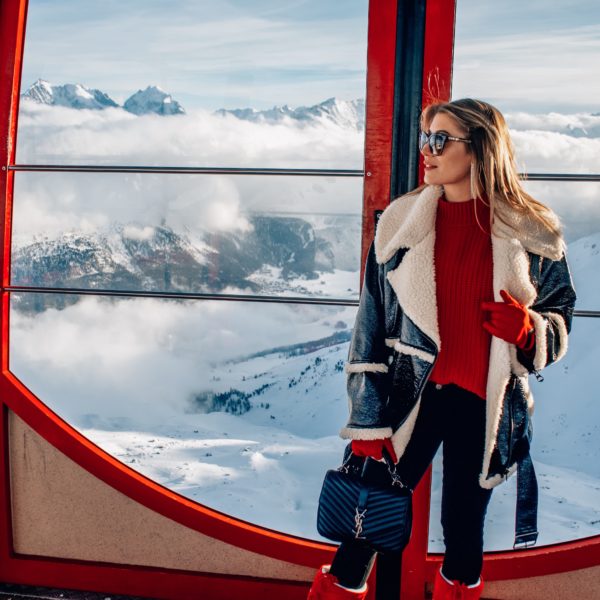Miami On Sight
Getting to know the Designers
This past Sunday in Collins Park, Miami on Sight hosted its first annual Fashion Show; Featuring 17 Sustainable designers.
Not only did I have the privilege of sitting front & center BUT I also got to interview some of the sustainable designers. Specifically, I got to spend time back stage interviewing: Taylor Dorry, Luis Almaraz of NOT IMPORTANT, Michelle Townson of La Roja By Misha & Virginie Fallon Romier of Sea Jasper.

I LOVED my outfit for the event! Two of the brands dressed me; it was a fun experience to try on their collections. I wore a handmade woven skirt and an oversized bow on top- all by Sea Jasper. I compliment it with lovely earrings from Jet Lag Mode (thanks Carolina), and my vintage Fendi bag from What Goes Around Comes Around.


Now for the interviews!
I thought of 6 Questions to ask 4 designers. It was cool to ask them the same questions and learn each of their perspectives. Here’s what everyone had to say…
Q: The word ‘Sustainable Fashion’ has become a trend in itself. Its meaning seems to vary. What is sustainable fashion to you?
Taylor: First, it’s being completely aware and knowledgeable of the current production process of popular brands and their effects on the environment. Then, it’s taking our knowledge and creating a new process. A process that is thoughtful about fabrics, dyes, emissions, working conditions, and waste. The more we know the better. For me, it’s more of a complete consciousness followed by a movement.
Luis: A second chance.
Michelle: You read my mind, I have been asking a lot of people the same question. It seems to me like the concept has just become a trending topic with no major explanation or real definition. For me, SUSTAINABLE FASHION is the responsibility that us designers have, to educate our consumers into buying products that don’t affect our Climate, oceans and planet. It’s our commitment to offer a better work place to the people that share their life to help our ideas come to life.
Virginie: Sustainability to me is being conscious of what you wear and educating yourself on how you can leave less of a footprint on our earth. It is important for us to look back at how consumerism has changed the face of the planet and try to mend what was broken by our actions.


Q: Can you explain which resources you use and how one would go about sourcing them. I’ve heard it’s more difficult.
Taylor: For this collection I have chosen to focus on forgotten bedding textiles and drapery. I am drawn to vintage (20+ years old) textiles. A perk is that they are everywhere. I find them at thrift stores, eBay, and you’d be surprised how many of your friends have a novelty sheet they’d be happy to see transformed.
Luis: I usually receive the textiles from other people who are going to throw away old clothes or fabrics that they don’t use. I also create my own textiles with the scrap fabric that is left over when making previous garments.
Michelle: The materials used in our products are the result of recycling PET packaging. After being processed in a recycling plant, the plastic is transformed into thread with 2 different thickness’, spaghetti and fettuccine. Afterwards, these threads are colored with different pigments. Once they’re done, they are driven for 8 hours, and brought to our shop where the magic begins! Each one of our bags is hand woven, and varies in production time. We make special details with organic cotton dyed with natural products, such as flowers and vegetables. Even moonlight can take part of the coloring process! When in full moon, the moonlight produces an effect on a certain type of plant. The beaded details are made by a community of handicapped artisans and stuffed with plastic bags. The process, the materials, our artisans are the reason why our prices are a tag higher.
Virginie: I generally use defective t-shirts, upcycled jeans, and organic natural fibers fabrics as materials. I also hand-dye my fabrics using natural dyes such as madder, brazilwood, and cutch. It is quite easy to find my resources because most of the materials I use are easy to find.

Q: Often eco-friendly brands are more expensive. Are overhead cost much more or do you feel it’s because it’s typically a luxury niche? What can be done to lower the cost?
Taylor: If upcycling is involved over head can be way less. It just takes a little more resourcefulness and creativity. As for newly made eco-friendly textiles a price increase comes with the territory. With eco-friendly brands fabrics are improved, work conditions are improved, waste management is improved, and so on. Improvements cost money. Sustainable fashion is slow or at least it should be. It’s a well made natural garment that is going to last you a very long time and never lose its splendor. It’s an investment for both yourself and our planet.
Luis: I agree that part of the high price tag comes from that specific high-end niche. With this niche comes an expectation and a dialogue that is expressed when one wears an expensive piece of clothing. I feel that the price tag should reflect the amount of work that is put into crafting a garment. I believe that consumers at times see garments as purely physical.
Michelle: I believe that us, designers have to tell the story behind our products in order for customers to understand the reason why prices are “high”. My line is targeted to everyone, we have bags from $45 and up. If you understand all the benefits the product you are purchasing has you wouldn’t think it’s Price. The famous world wide brands sell prestide, luxury and craftsmanship and we feel pride when wearing them. We should feel the same pride when wearing sustainable products. It’s possible to lower prices once consumers are more informed on the process and benefits the goods they purchase have.
Virginie: Though sustainable fashion usually costs more, I strongly believe in slow fashion, the idea that we can be mindful of how our clothing is made and try to find sustainable alternatives. If a brand is sustainable, then the higher price will be more worth it in the long run. We will be paying for less the damages that we inflict upon our planet. Appreciation of both the process and outcome is what drives people to be patrons of sustainable fashion brands.

Q: Being an eco-friendly brand, has it limited your design capabilities?
Taylor: I’m just getting started in the sustainable practices I’ve studied but as far as I can tell my eco-friendly options are far from slim. Upcycling can be a challenge when it comes to recreating a garment but that’s what makes them all so special.
Luis: On the contrary, it has led me to creating interesting pieces with unorthodox materials. Innovation is the result of necessity.
Michelle: Not at all, since my beginning I knew the material I wanted to work with. As a matter of fact, it has elevated the quality of design and craftsmanship. It has made my artisans more aware of their abilities.
Virginie: Being an eco-friendly brand has definitely limited my capabilities as a designer because I can’t use some fabrics and methods that have become so popular and widespread today. However, this encourages me to be creative in how I go about designing and making my products. Additionally, the ease in reverting back to unsustainable methods will perpetuate the ruinous cycle that the fashion industry tends to have on our planet. In the long-run, eco-friendly brands will hopefully elicit a stronger, more global movement in favor of sustainability.

Q: Why do you feel most brands haven’t adapted to sustainable lifecycles? What can consumers do to help push this shift?
Taylor: Companies with an already established business model and working facilities will stick to what is working for them and what we respond to. Stop responding. Support sustainable brands. If we do that they’ll eventually have to make the shift if they want to survive.
Luis: I feel that it’s due to the traditional way that fashion is perceived. Anything and everything is fashion. Consumers can help by demanding products that were made with untraditional textiles and methods.
Michelle: Well this is a tricky question because “business is business” and at the end of the day brands think of numbers without any consideration to what the fashion industry does to our planet. Customers react to what designers influence them to think, feel or experience through their designs. If we transmit the message about sustainable fashion in a simple, clear way customers will change.
Virginie: It is much cheaper for major corporations to pursue destructive methods and avoid sustainability altogether. Thus, it should be a major goal to bring more awareness about sustainable fashion and its objectives in order to receive the majority of the public’s vote. Changing consumers’ perception on the clothes they wear will hopefully sway major corporations in favor of sustainability.

Q: What’s something you’d like the audience of Miami on Sight to take away from this show?
Taylor: I would like them to see that sustainability in fashion doesn’t mean you have to wear a potato sack. There are beautiful, thoughtful, and sustainable brands right in your backyard you just have to look.
Luis: An understanding.
Michelle: Awareness … I would definitely want everyone to be more conscious of the products they buy.
Virginie: In a world where concern over the worsening state of our environment is growing, sustainability is the future. Sustainability is putting back what you take from the earth. At this point, to turn our backs to a sustainable lifestyle is to effectively spell destruction for our environment. We need to be more conscious of the resources and energy we take from the earth so that we can ensure a better life for future generations.

I would love to hear your thoughts on the interview, and which designer you relate to the most. I’m already looking forward to next years Miami on Sight fashion show. To keep up with their next events, follow them on Instagram @miamionsight.
Working on more blogs for you soon!
Samantha x



